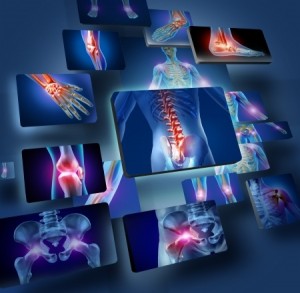Everything You Need To Know About Osteoarthritis Treatment
Osteoarthritis is an orthopedic problem in which one or more of the body’s joints degenerates, leading to pain, mobility issues, and other symptoms. The condition is chronic, but treatment can adequately control symptoms in the majority of cases. Below, we’ll take a look at the most important facts to know about osteoarthritis treatment. 
What Osteoarthritis Is
A joint is where two or more bones meet. The ends of bones that meet at joints are covered in cartilage, which helps facilitate smooth movement. Joints also contain synovial fluid, a fluid which helps the joints move smoothly, and may also contain fluid-filled sacs and other substances.
Arthritis is a broad term that refers to any inflammation in a joint. Osteoarthritis is more specific, and refers to the degeneration of a joint. Cartilage can wear down and even expose the bone, which may become damaged. In large joints such as the knee, the joint’s fluid may become depleted.
Osteoarthritis may occur in any joint in the body. However, it is especially common in the knees, hips, and hands. Anyone can develop osteoarthritis, but the factors such as age, genetic propensity, and obesity can increase one’s risk.
The Outlook
Osteoarthritis is a chronic condition. Although it is very possible to manage symptoms of inflammation, it is not possible to reverse the damage that caused that inflammation. Therefore, the goal of treatment is to manage symptoms and prevent further joint degeneration.
The Approach to Treatment
In osteoarthritis treatment, doctors will use the least invasive treatment that is likely to be successful. The majority of cases can be managed without ever resorting to surgical treatment.
Some treatments that may be employed in the management of osteoarthritis include:
- Physical therapy – Teaches exercises that help strengthen the muscles that support the joints, reduce inflammation, and improve flexibility. A cornerstone of osteoarthritis treatment.
- Exercise and stretching – During and after formal physical therapy, it is important to regularly exercise and stretch.
- Occupational therapy – Occupational therapists work to restore the patient’s ability to perform normal tasks, such as dialing a telephone or bathing.
- Weight loss – Carrying excess weight places stress on the body’s joints. Losing as little as 10% of one’s body weight if obese can lead to a reduction in symptoms.
- Smoking cessation – Smoking contributes to inflammation and reduces the body’s capacity to heal. Stopping can help.

- NSAIDs – Non-steroidal anti-inflammatory drugs (NSAIDs) such as Aleve and Advil may be prescribed to reduce inflammation
- Steroid injections – Provide powerful but localized reduction in inflammation.
- Surgery – If the symptoms are severe and do not respond to other treatments, surgery may be necessary. During surgery, the doctor accesses the joint and removes damaged cartilage and bone, replacing it with prosthesis.
Dr. Howard Marans would be happy to meet with you about your osteoarthritis. To schedule your consultation today, please click below and enter your information or call OC Orthopedic at (714) 979-8981.


